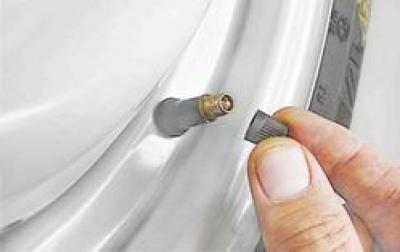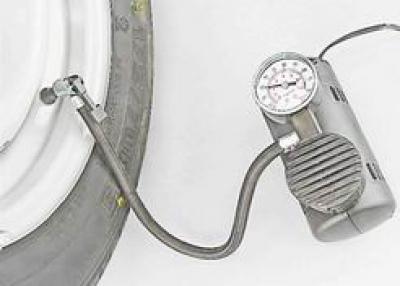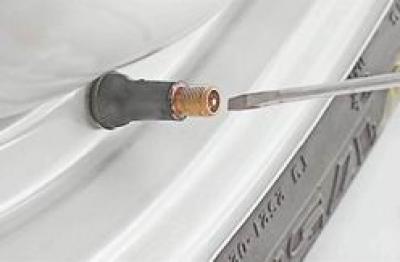The pressure in the tire also changes while the car is moving at high speed and frequent maneuvers. In winter it is almost imperceptible. Cold air and low road surface temperatures prevent the tire from heating up. During the summer period, the oncoming flow of warm air does not cool the tire well, and its temperature begins to rise. Additional heating of the tire comes from the road surface heated by the sun's rays. All this can increase the pressure in the tire by 0.2-0.3 kgf / cm².
Table 10.3.1. Tire pressure (kgf/cm²)
|
Tire size |
Front wheels |
rear wheels |
|
175/70R13 (165/80R13) |
1,7+0,2 |
2,0+0,2 |
|
165/70R13 |
1,6+0,2 |
1,9+0,2 |
Warning! Tire pressure is measured when its temperature is equal to the ambient temperature. To do the job, you will need:
- manometer;
- compressor or tire pump.
Execution sequence
1. We prepare the car for operations (see "Vehicle preparation for maintenance and repair").
2. Turn off the protective cap of the wheel valve.

3. We connect a pressure gauge or a tire pump with a pressure gauge to the valve.

4. If the pressure does not correspond to the norm, then we bring it to the required value by inflating the tire with a pump or releasing excess pressure by pressing on the spool rod with a suitable tool.

When pumping, we control the pressure according to the pressure gauge of the pump or compressor.
Warning! When inflating, the pressure gauge, as a rule, shows the pressure not in the tire, but in the air supply hose. To determine the true pressure in the tire, it is necessary to interrupt the inflation process.
5. We screw a protective cap onto the valve.
6. Similarly, we check the air pressure in the remaining tires of the car.
